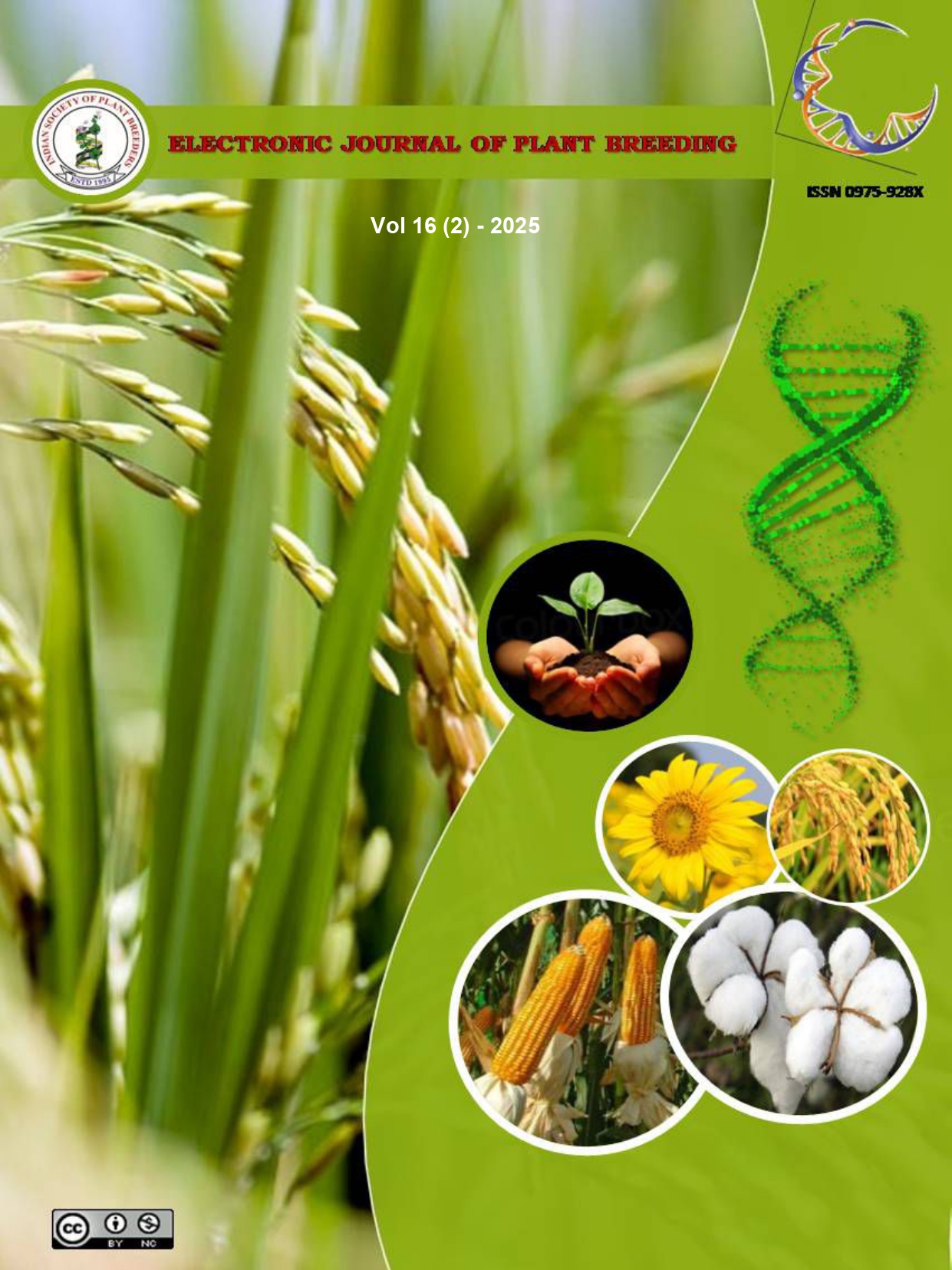Determination of breeding approaches for improvement of economic traits in Indian muskmelon (Cucumis melo L.) through assessment of gene action
DOI: 10.37992/2025.1602.022
Abstract
Muskmelon is an important cucurbitaceous vegetable due to its excellent taste, flavour, aroma and other quality traits present in its fruit. Architectural phenotypes of this crop have great potential to increase its fruit yield at the commercial level. Generation mean analysis was conducted in the year 2023 comprising five crosses of muskmelon (PMM-4A x Hara Madhu, PMM-4A x PMM-37, PMM-1 x Hara Madhu, PMM-32 x PMM-16, PMM-13 x PMM-16) derived from seven inbreds to study the gene action for implying correct breeding method to improve some important yield attributing traits. The results found in the present experiment suggest choosing specific breeding technique for a particular cross for improvement in a single character as both the type and intensity of gene action varied for a solitary trait in different crosses. Character-cross combination specified the role of simple additive gene for governing days to first female flower (Cross I and II) and total soluble solid content (Cross I, II, III and IV). Thus, simple pedigree method and selection in early generation could be adopted to improve these traits. Effect of dominance was observed in vine length (Cross-III) and number of fruits (Cross-II) where heterosis could be viable. Most of the cross combinations showed non allelic interaction in digenic level where duplicate epistasis was reported for all the traits like days to female flower (Cross III and IV), vine length (Cross I, II, IV and V), number of fruits per plant (Cross I and III), average fruit weight (Cross I,III, IV and V), fruit flesh thickness (Cross I, III,IV and V), fruit yield (Cross II and V) and TSS content (Cross V) indicating selection to be done in later generations at high intensity. Breeding methods like population improvement through biparental mating or recurrent selection would be effective to achieve sufficient improvement in these characters. On the contrary, the presence of complementary gene action in cross V for earliness, cross IV for number of fruits and cross II for fruit weight showed the significance of heterotic improvement.
Keyword: Gene action, Generation Mean Analysis, Muskmelon, Scaling test, Epistasis
Determination of breeding approaches for improvement of economic traits in Indian muskmelon Cucumis melo L. through assessment of gene action
. 2025. Electronic Journal of Plant Breeding, 16 2, 154-165. Retrieved from https://ejplantbreeding.org/index.php/EJPB/article/view/5326It is certified that:
- The corresponding author is fully responsible for any disputes arising due to the publication of his/her manuscript.
- The article has been seen by all the authors who are satisfied with its form and content.
- The sequence of names of authors in the by-line is as per their relative contribution to this experiment, giving due credit to all scientists who made notable contribution to it.
- All the authors fully understand that inclusion of any other co-authors or exclusion of any co-authors is not possible once the article has been submitted to the journal.
- The corresponding author takes full responsibility for this article.
- The address of the organization where the research was conducted is given.
- The article is exclusive for this journal, and the results reported here have not been sent (and will not be sent during its consideration by this journal) for publication in any other journal.
- Authors agree to abide by the objective comments of referees and do agree to modify the article into a short note as per the recommendation, for publication in the Electronic Journal of Plant Breeding.
- If published in Electronic Journal of Plant Breeding, the copyright of this article would vest with the Indian Society of Plant Breeders, who will have the right to enter into any agreement with any organization in India or abroad engaged in reprography, photocopying, storage and dissemination of information contained in it, and neither we nor our legal heirs will have any claims on royalty.



